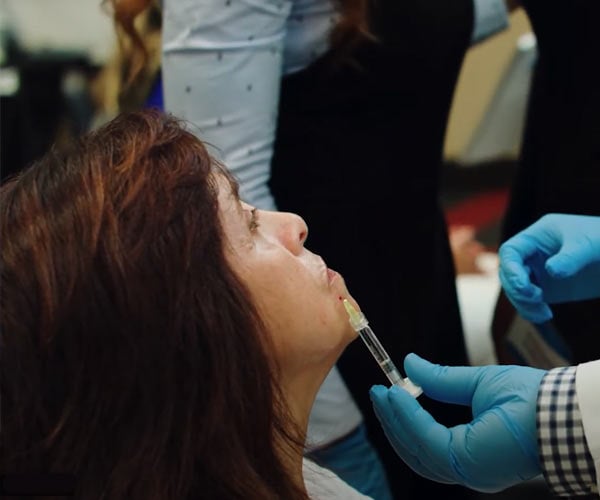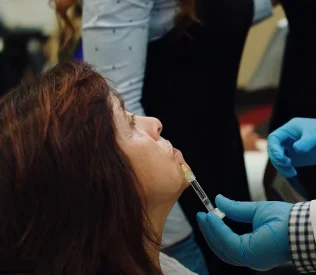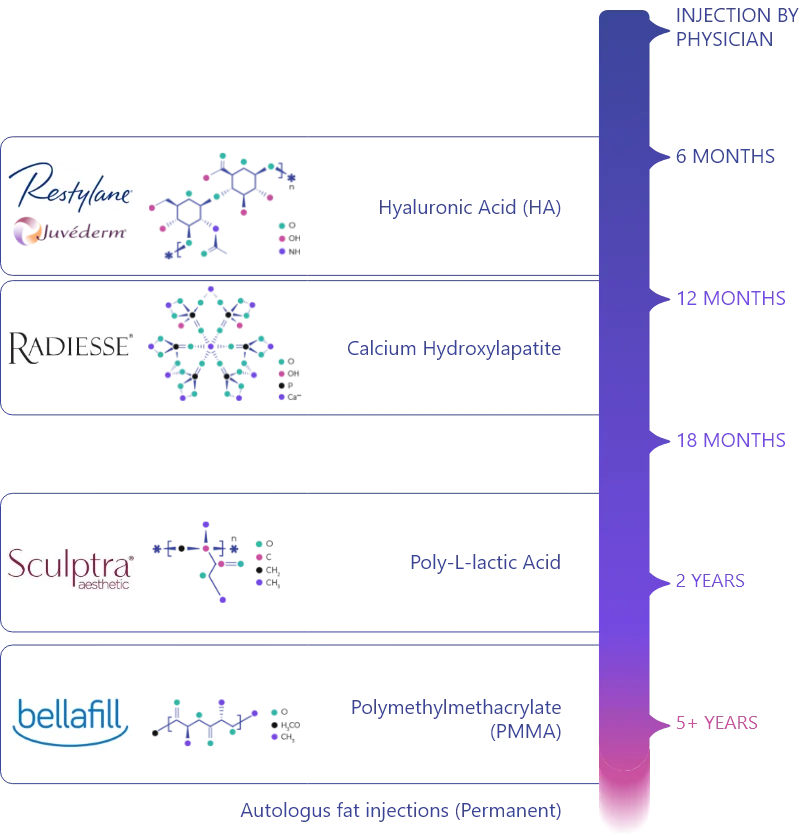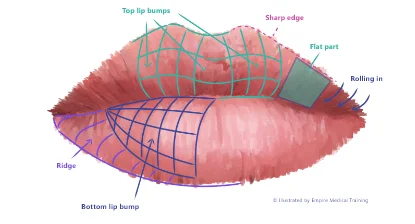How Long Does Filler Last?
By Dr. Stephen Cosentino
PRESIDENT OF EMPIRE MEDICAL TRAINING
DERMAL FILLER | April 9, 2021

How Long Does
Filler Last?
Entry made by
Empire Medical Training
The market for dermal fillers like Juvederm®, Restylane®, Radiesse®, Sculptra®, and Bellafill® is thriving. A recent analysis
by Global Market Insights estimates the total size of the market above $6.2 billion in 2019 and poised to grow at an adjustable
annual rate of about 7.6% through 2026. Simply put, dermal filler treatment is more popular than ever.
The popularity of this FDA-approved anti-aging treatment is no surprise. Like other popular cosmetic treatments,
such as Botox®, dermal filler injections produce visible, durable results within days of treatment. By adding volume to the face and reducing telltale signs of aging like lines and wrinkles, fillers increase patient confidence
and subjective aesthetic appearance.
Of course, dermal filler treatment is not a permanent solution to the aging process. Filler treatments are temporary. And it’s only fair that one of the most common questions asked
by patients and new clinicians alike is: How long do the results last?
How Long Does Filler Last?
According to American Board of Cosmetic Surgery data on injectable dermal filler procedures and other cosmetic treatments, the visible results of dermal filler treatments generally last from 6 to 18 months, depending on the type. Twelve months is a typical
average for the most common treatments.
Several factors influence how long filler lasts and how the results change over time, including filler composition (active ingredient). For many clinicians and patients, the
easiest way to visualize the differences between types of fillers is to distinguish by brand:
- Restylane: Generally 6 to 12 months, with touch-ups recommended at 6 to 9 months for certain types
- Radiesse: About 12 months
- Juvederm: Generally 6 to 12 months, but certain Juvederm-branded products may last as long as 18 to 24 months
- Sculptra: 24 months or longer
- Bellafill: Up to 5 years

Because dermal filler results vary by patient, clinicians who wish to add these treatments to their practices should understand the range of possible outcomes and the factors that influence these outcomes’ visibility, durability, and subjective quality. Clinicians should also understand the patient-, treatment-, and compound-specific factors that influence how long filler treatments last. This knowledge is critical for patient education and expectation-setting, both of which correlate with better self-reported patient outcomes and overall experience ratings — which in turn correlate with higher recommendation rates.
What to Expect: Dermal Filler Results and Outcomes
Any discussion of dermal filler results’ durability must be clear on the nature of those results. What are the dermal filler effects we should expect to last, and do certain effects last longer than others?
Fillers
temporarily reduce the appearance of fine lines and wrinkles by adding volume to the layers of skin around the injection site. This volumizing effect smoothes lines and creates the appearance of plump, well-hydrated skin, due
in part to their ability to retain water.
The effects of dermal filler injections become apparent right away, generally before the patient leaves the treatment site. Over time, fillers’ “plumpening” effect lessens
as the active ingredients degrade and lose their ability to hold water. Observant patients, and eventually others, will begin to notice the reappearance of subtle lines and wrinkles as the months pass. Lower-dose touch-up treatments
can prolong the effects for some months longer if the patient desires.

Factors That Influence How Long Filler Lasts
Several factors influence how long dermal filler treatments last before repeat cosmetic procedures are necessary:
- Filler category: There are three commonly used FDA-approved filler categories: hyaluronic acid (the most common and “beginner-friendly”), calcium hydroxylapatite, and poly-L-lactic acid. Fillers made with the first two typically last from six months to 18 months, depending on dosing and other factors. Fillers made with poly-L-lactic acid last a bit longer, typically around two years.
- Dosing: The initial dose received by the patient, and any touch-up dosing, affect fillers’ durability. The effects of higher doses may be visible for longer than the effects of lower doses.
- Injection site: Filler effects are more visible and durable on certain parts of the face than others. Patient-specific anatomical variation may play a role in filler durability as well.
- The body’s reaction to the treatment: Some patients metabolize fillers faster than others. The rate at which the body breaks down fillers’ active ingredients is a significant limiting factor in treatment durability and may necessitate more frequent treatments.
Possible Side Effects and Complications From Dermal Fillers
No dermal filler training course is complete with a thorough overview of the possible side effects and complications of dermal filler treatment.
Most dermal filler side effects are
mild and temporary: itching, redness, mild swelling, bruising, or tenderness at the injection site. These side effects usually resolve within a week or two and do not affect appearance or treatment durability.
More
serious complications of dermal filler treatment include infection at the injection site, skin discoloration, an allergic reaction (such as anaphylaxis), skin necrosis, bleeding, or skin lumps. Clinicians should advise patients
to consult them, and possibly seek emergency medical treatment, if these symptoms develop.
Can Filler Treatment Be Reversed?
This question follows naturally from “how long does filler last?” When filler treatment candidates learn that dermal filler results can persist for 12 to 18 months or longer, their natural reaction is: “That’s wonderful…unless I’m not satisfied with the
results. Then what?”
The news here is mixed. Hyaluronic acid treatments generally can be reversed with a simple procedure that uses hyaluronidase, a sort of antidote to hyaluronic acid fillers.
This procedure is easily conducted in clinics and rarely results in complications.
That’s the good news. The bad news is that, for all practical purposes, the results of other types of dermal fillers cannot be reversed.
Patients unsatisfied with the results of a treatment must wait for the effects to wear off in anywhere from six months to five years, depending on the type. For this reason, clinicians recommend that first-time filler candidates
choose hyaluronic acid to start and carefully document the results. Those satisfied with the results can move on to other types of fillers that are not so easy to reverse.


